The thing about being a woman is you always have to pretend to be interested in characters in books and movies to whom you don’t quite relate. I don’t relate 100 percent to men in suits, or men with guns, or men pining after women, or anguished male artists in paint-splattered pants, or men sailing ships, or men making money. I relate, at best, 74 percent to these men. And then I do the work, make the mental leap, bring myself the extra 26 percent so I can really enter the story.
What I can potentially relate to 100 percent is women. Women in flowing bow ties, women cleaning floors, women chopping wood, women knitting, women leading countries, women wrestling wild animals, women raising kids, women making eyes at men, women making eyes at women, women doing nothing at all. Some of the books and movies I come across are about women, but not enough. It’s fun to read books about people who are different from you, but not if your own story is so excluded that you feel erased.
The women in Ogden Whitney’s comics live to find love. If they are distinguished, or distinguishable from one another, it is only in order to offer a different spin on the tried and true form of the romance story. They are vivid characters, but their vividness exists solely to attract the attention of men. Although there are plenty of talented and interesting women in the pages of Whitney’s Return to Romance, clichés still abound: if they know how to cook, that’s good. If they don’t know how to dress, that’s bad. The edgy beatnik character in “Beat Romance” turns out not to be a beatnik after all: she’s a polite, healthy coed, top of her college class—not a threat to the status quo, and therefore deserving of romance.
Our knowledge of Whitney is shadowy. He was born in 1918 in Massachusetts and later lived in the Bronx. At twenty he began working for Detective Comics, Inc., which is now DC Comics, and from there created a number of superheroes, the most famous of which was Herbie Popnecker, a fat, unhappy child who wields a magic lollipop. Whitney drew the romance comics in the early sixties, when New York comic book publishers were trying to use love stories to reach a new audience of teenage girls. Unlike most of the artists drawing romance comics in that period, however, he didn’t use stock plots but likely invented his own; their pacing and interest in social relations, even within the confines of the genre, are part of what make them worth reading today. Whitney’s life was marked by its own romance. By all accounts a lonely, withdrawn man, he married Anne Whitney in 1958 at the age of forty. (She was forty-two.) Their marriage coincided with one of the most fruitful, inventive moments in his career, and when she died in 1970, he is said to have been overtaken by alcoholism and madness.
Are these comics sexist? Sure they are. They depict the female stereotypes of a very sexist, very white Protestant, early sixties American society, where a woman’s highest calling—higher even than cleaning and cooking—is to attract a man by being lovely and pointy-breasted, a light dancer, an easy laugh, supportive of the man in all his pursuits, and fun without being threatening. It’s a stupid, quietly violent thing to tell a woman: that her vocation is to be pleasant to men, and her supreme goal is to be chosen, kept, erased by one reassuringly tall, clean-shaven fellow. But it’s even more of a violent thing to tell a woman indirectly, by not putting her point of view in the book at all. I’ve been told these things indirectly all my life. It’s a relief, in these comics, to hear it said out loud, said to us, so we can make of it what we will. These comics won’t turn you into a sixties housewife. They’ll remind you, with a rush of fairy-tale feeling, that you are an I. With the great power that comes with selfhood, perhaps you’ll be able to identify the sixties housewife living inside you. So you can gently thank her, and let her go.
Here’s my confession: Not only do I not mind Whitney’s romance comics, I love them. I find them touching and empowering and human. The stories are ridiculous. They have a lot of charm and are beautifully crafted, but it’s not hard to see behind the scenes and think, This is a world where everyone is a white American Protestant, and where a woman’s sole value is in her desirability to men. This is propaganda. I will take it with a grain of salt. The romance comics don’t hide their retrograde politics. They make them clear, so you can concentrate on reading, and not expend the usual energy weeding out the sexism cleverly hidden in art and pointing it out to others. I also think, by some miracle, Whitney really understands and empathizes with his female characters—Margie Tucker, the “hopelessly dumb” farm girl with a heart of gold; Nancy Wilson, the pug-nosed scientist; Roxanne Farr, ambitious president of Roxanne Frocks, Inc.; Cindy Lamb, the spunky coed; Meg Foster, the self-abnegating aunt—the way Anton Chekhov and Alfred Hitchcock (who was a terrible person, by the way) do.
These comics are fairy tales. They tell you that you’re chosen and precious. It’s true, they tell you, that no one notices how special you are now, but notice is within reach: all you have to do is lose a few pounds, do your hair differently, buy a new dress, and everything will be wonderful. Fairy tales were originally oral histories, told from mother to daughter. A woman, as a daughter learns from her mother, is not a full human being. A woman is a storybook character, like Prince Charming or Santa Claus. She can act only according to certain rules. She lives in fairy tales. Once your mother has told you a fairy tale, the character of the woman lives in you, too. You can’t get her out. She’s tied up with you, but she is not you. We are blessed and cursed to have her, just as we are blessed and cursed to be able to give birth to our own daughters, if we wish, and teach them these lessons, too.
What is a woman? She is all things good and lovely. Often unrecognized, and kept down by forces less incorruptible than herself, she prevails by force of sheer quietness. How, specifically, does she prevail? By winning the man: Prince Charming. Like most of the female characters in great romantic books and films—Philip Roth’s women, Junot Díaz’s women, Haruki Murakami’s women, Wes Anderson’s women, Woody Allen’s women—Prince Charming is alluring but opaque. A love object. How delicious and rare for a man to be seen in this way. For a woman to be the one watching him. Even if, ostensibly, according to the story, she’s only watching him watch her. Astrid Franklin, in the title story—who loses her dreamy husband by neglecting her looks and wins him back by changing her hair style and clothes, losing weight, and putting on makeup—is one-dimensional. But her feelings—low-level depression, then devastating loss, then blinding realization, and then triumph—are all the more relatable for it, and so gratifying. And there is so much pleasure in a happy ending: Astrid Franklin wants only one thing from life, and her wish is granted.
Fairy tales are a twisted thing. Femininity is a twisted thing. It’s a kind of religion. As for Prince Charming, I will never have him, and I don’t want him. But don’t make me give up my longing for him. Tell me about it again and again. Tell me fairy tales the rest of my life.
Liana Finck is a cartoonist for The New Yorker and the author of A Bintel Brief, Passing for Human, and Light and Shadow. She lives in New York City.
From Return to Romance, by Ogden Whitney, edited by Dan Nadel and Frank Santoro, published by New York Review Comics. Introduction copyright © 2019 by Liana Finck.
from The Paris Review https://ift.tt/2Bxz2co
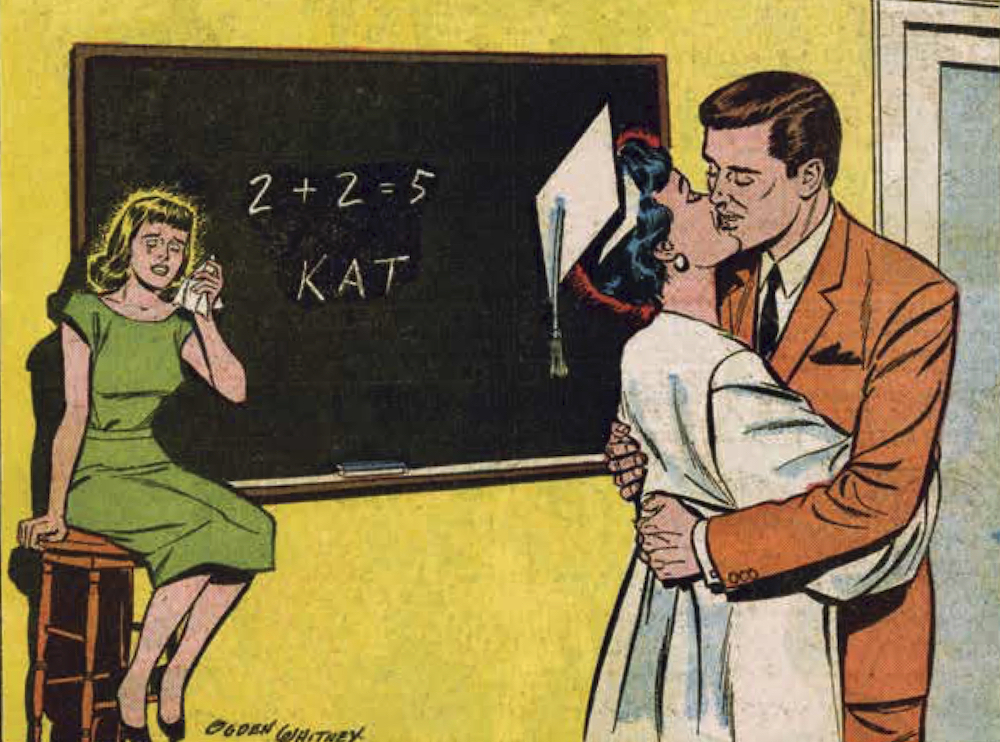
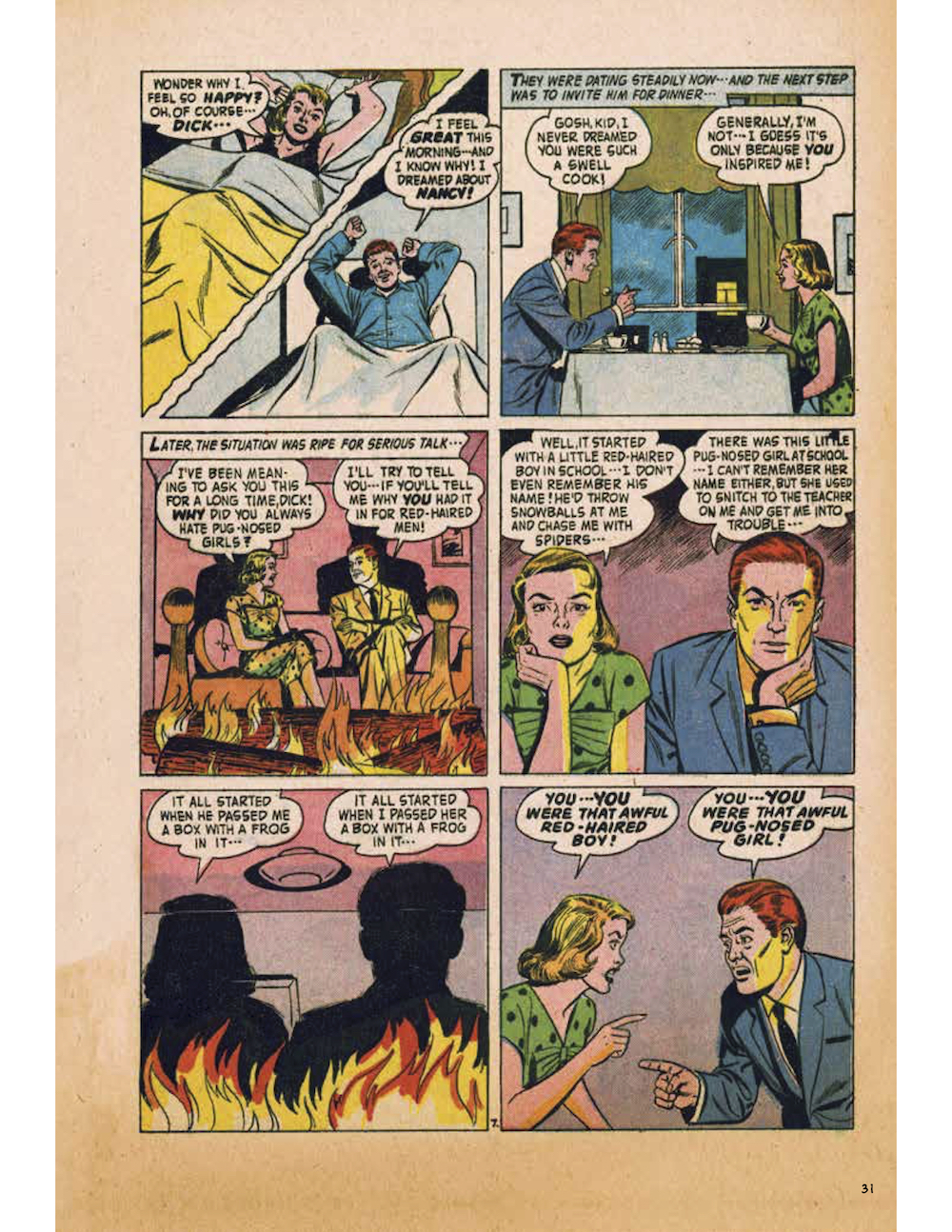
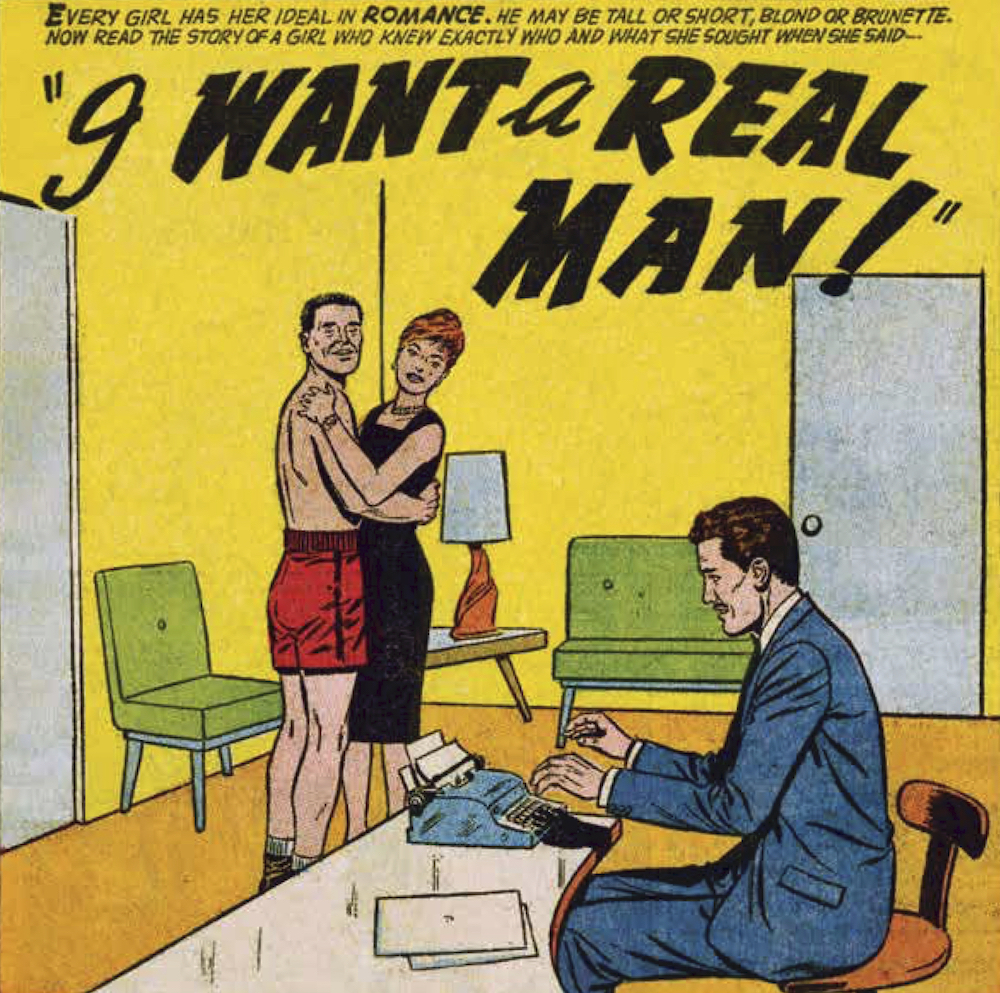
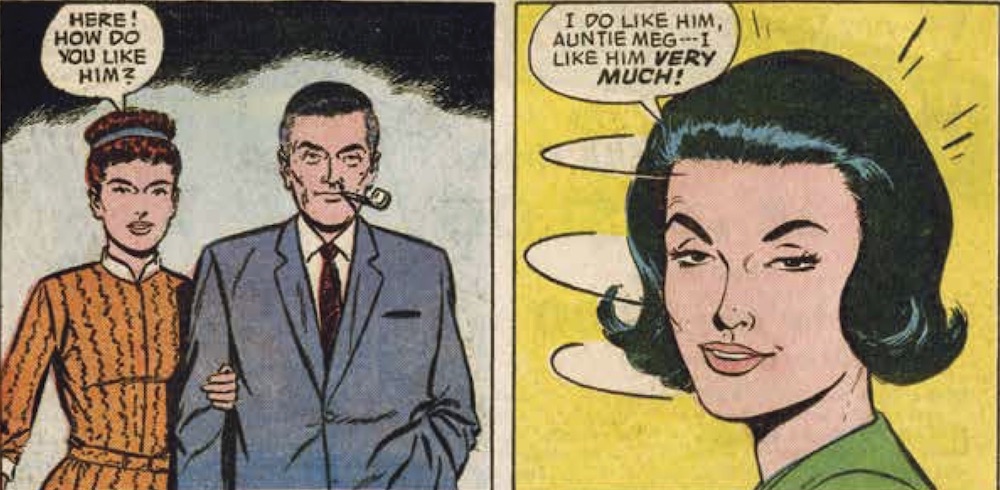
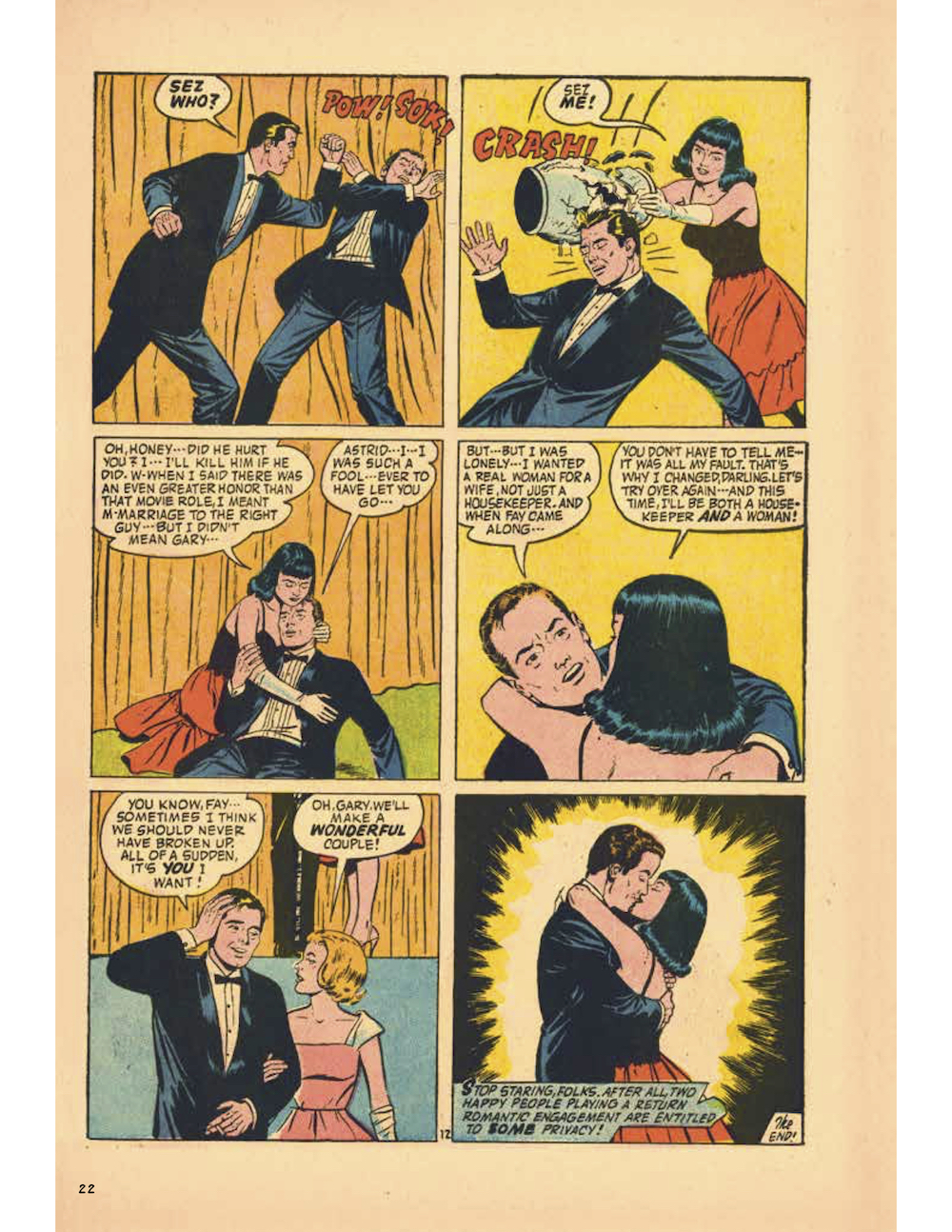
Comments
Post a Comment